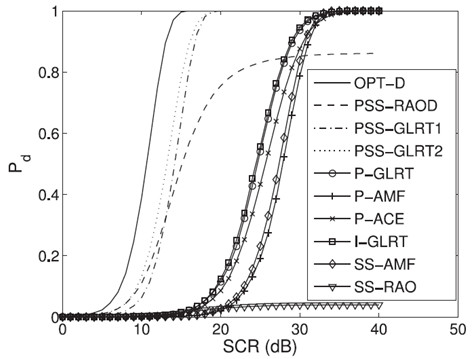
Over the last decades, adaptive radar detection of point-like targets buried in noise-like Gaussian interference has been extensively investigated. Most of the existing approaches assume that a set of secondary data, free of signal components but sharing the same spectral properties of the interference in the cell under test (primary data), is available for estimation purposes. However, when it is in the sample-starved scenarios, the detection performance degrades.
Possible means to cope with such situations is persymmetric structure of the interference covariance matrix. It can be used to improve the estimation quality of the sample covariance matrix in training-limited scenarios.
Another way is represented by the properties of the power spectral density of the clutter. This symmetry yields an important structure which reduces the number of nuisance parameters to estimate and can be exploited at the design stage.
Recently, HAO Chengpeng from the Institute of Acoustics of the Chinese Academy of Sciences work together with Italian scientists Orlando Danilo, Foglia Goffredo and Giunta Gaetano to combine the aforementioned two kinds of a priori information. Precisely, they jointly exploit the spectral symmetry of the ground clutter and the persymmetric structure of the interference covariance matrix to come up with four adaptive architectures with enhanced detection performances.
At the design stage, the researchers assume that a set of secondary data, free of signal components and sharing the same spectral properties of the clutter as the primary data, are available. Firstly, they exploit the persymmetric structure to obtain an intermediate form of the problem where the number of primary and secondary data is doubled. In the following, they resort to the symmetry of the power spectral density of the clutter to perform a further transformation coming up with an equivalent decision problem where data are real and data volume is double.
To solve the transformed problem, the researchers propose four adaptive architectures relying on well-known design criteria as the Generalized Likelihood Ratio Test, the Rao test, and the Wald test. Finally, the performance of the new receivers, the PSS-RAOD, PSS-GLRT1 and PSS-GLRT2, is validated with both simulated data and real recorded data.
Precisely, the illustrative examples show that the three proposed decision rules overcome those receivers which take advantage of either the persymmetry or the symmetric power spectral density, guaranteeing excellent detection performances in sample-starved scenarios, as shown in Fig. 1.
Funding for this research came from the National Natural Science Foundation of China under Contracts 61571434.

Fig. 1 Pd (Probability of Detection) versus signal-to-clutter ratio (SCR) (Image by HAO Chengpeng et al.)

86-10-68597521 (day)
86-10-68597289 (night)

86-10-68511095 (day)
86-10-68512458 (night)

cas_en@cas.cn

52 Sanlihe Rd., Xicheng District,
Beijing, China (100864)

